Notes From a Writer's Desk: Gamifying Research and Writing


Share this page
Here is a scenario that is not too difficult to picture: you have a dissertation chapter that you need to write, but you’ve had no motivation (or time) to write it. I can’t tell you how many times during the process I sat down at my computer to do some writing, and suddenly the ideas or words I had envisioned in my head, not minutes prior, just evaporated. This was especially true during the pandemic, when the commute to my workspace was reduced to the five feet between my bed and my desk. I tried several ways to boost productivity and improve my writing habits, including simple goal setting and establishing arbitrary deadlines, but this didn’t encourage a productive pace and left wiggle room that procrastination always found a way to fill. I sought different ways to improve this goal-setting method, and I found gamification to be worthwhile.
The object of gamification is to utilize game elements, including gameplay mechanics and structure, point scoring, competition, and prizes, to encourage certain behaviors. Gamification is often used by companies to encourage consumer engagement with products. Frequent flier miles are a great example, as accruing points through repeated use of an airline can result in rewards like free flights or upgrades. Another noteworthy example is the system of achievements embedded in many video games. These achievements may be tied to core missions or game mechanics or associated with arbitrary tasks available in the normal course of the game, and they often reward the player with a score, digitally tangible badge, or in-game trinket.
We can utilize similar models to mask the “work” aspect of our research and writing by associating it with something fun, motivating, or rewarding. I used an achievement system towards the end of my own dissertation work, and my favorite arbitrary dissertation achievement was for my bibliography to have authors representing every letter in the alphabet, which I achieved thanks to an article on doubled divinities in the Phoenician world by Paolo Xella.
Recently, I led a workshop called “Gamifying the Dissertation,” where I presented ideas on gamifying research and writing. I offered some basic examples of the do-it-yourself (DIY) approach that students could develop on their own or with a group of friends or colleagues, including:
Create a points system
You can motivate yourself to write by assigning values to aspects of your writing, such as word count or time spent writing. You can track points at week or month intervals and try to set a high score. Alternatively, you can collect points and exchange them for rewards, like a weekend trip, a date with your significant other, purchasing a coat, or going to Costco. A points system is a fun way to compartmentalize larger projects into smaller, more manageable chunks, and to reward yourself for each step of the process. You can also share it with your friends and compete for rewards, or even recruit friends and family to supply rewards for you to strive toward.
Create your own game
If you are interested in something more complex, you can create your own game centered around your research and writing habits. For example, you could create a list of enemies that require a certain amount of XP to defeat, which you can earn by completing certain research or writing tasks. You can introduce randomness by using cards or dice to determine the XP required to defeat an enemy or the amount of XP awarded per task. This can also be a group accountability activity, with each member responsible for gaining enough XP to collaboratively defeat enemies.
Workshop attendees brainstormed ideas for gamifying their work and for designing a useful system for students from different disciplines. They also raised interesting questions about gamification, including what can be considered an incentive—is ice cream an incentive, a motivator, or both?—and how to keep gamification from consuming us and hindering progress, thus defeating its purpose. One way to potentially avoid this pitfall is to use a ready-made platform for habit and/or writing tracking, such as:
Modeled after Dungeons and Dragons-type RPGs. Uses a dungeon master who assembles a player party and designs a campaign of pre-made or custom tasks that reward XP.
Allows you to specify your tasks, level of difficulty, and rewards. Its user-friendly interface reminds me of a gamified version of Trello and other similar task managers.
Combat-RPG concept aimed at writing, with a focus on word count that translates into XP needed to defeat a series of monsters on your quest.
Uses monetary incentives, allowing you to place bets on yourself to accomplish your goals. If you don’t meet your goals within certain parameters or with a certain consistency, you pay up.
Write or Die
Uses a variety of incentives in its three different base modes: Stimulus, which encourages focus and productivity by changing the audio-visual elements of the interface; Consequence, which punishes you with alarm noises and images of spiders; and Reward, which treats you to pleasant sounds and images like kittens and puppies. For real risk-takers, there is also Kamikaze mode, which will start deleting your work if you don't meet your goals.
Written? Kitten!
On this free platform, you can set your own word goal intervals (100, 200, 500, 1000 words), and at each interval, you are rewarded with a picture of a kitten, puppy, or bunny.
Awards you with points for participating each day and for writing 750 words each day. You can also compete with others on monthly challenge leaderboards.
Fighter’s Block
A more active writing catalyst, pitting you against a monster who drains your health over time, and who can only be defeated by meeting your self-imposed word goal.
There are many options available for those interested in gamifying their research and writing habits, and there are many options I have missed. If anyone has a platform that they use, please feel free to let me know at [email protected] .
Ready to book an appointment with FWC staff? Access the FWC intake form .
Banner courtesy of Shutterstock
Get the Latest Updates
Join our newsletter, subscribe to colloquy podcast, connect with us, related news.

Notes From a Writer's Desk: From Text to Text
The Fellowships & Writing Center (FWC) recently held two talks as part of our annual April Speaker Series: “The Translator as Reader and Writer”; and “Moving from the Dissertation to the Book.” [...] While these talks might seem to bear little similarity, a common theme emerged: the transformation of one form of text into another.
Notes From a Writer's Desk: Code for Writing
Being well-written is a merit as valid for coding as for writing. Conversely, some writing foibles prompt me to think, “A computer will not be able to understand this!” It occurred to me that coding principles and best practices can actually help to promote more lucid writing.
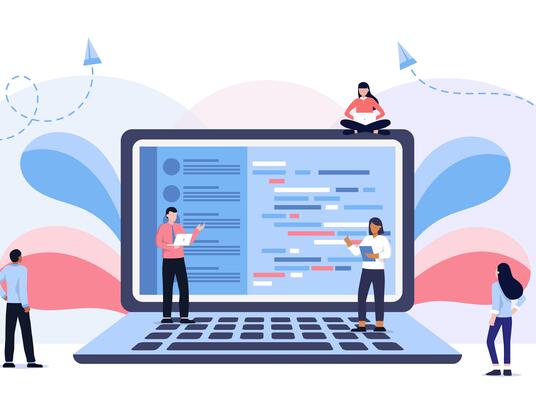
Karan and Jiang Awarded Soros Fellowship for New Americans
The merit-based graduate school program, founded 26 years ago, celebrates the achievements and potential of immigrants and children of immigrants across the United States.

Notes From a Writer's Desk: The Genius of a Problem and Solution Framework
Imagine you are writing an article and there is a paragraph that just keeps getting longer and longer despite all your attempts to stop it. What would it look like to pause and think about the paragraph in terms of the problem and solution?

- Skip to main content
- Skip to primary sidebar
- Skip to footer
- QuestionPro

- Solutions Industries Gaming Automotive Sports and events Education Government Travel & Hospitality Financial Services Healthcare Cannabis Technology Use Case NPS+ Communities Audience Contactless surveys Mobile LivePolls Member Experience GDPR Positive People Science 360 Feedback Surveys
- Resources Blog eBooks Survey Templates Case Studies Training Help center
Home Market Research
Desk Research: What it is, Tips & Examples
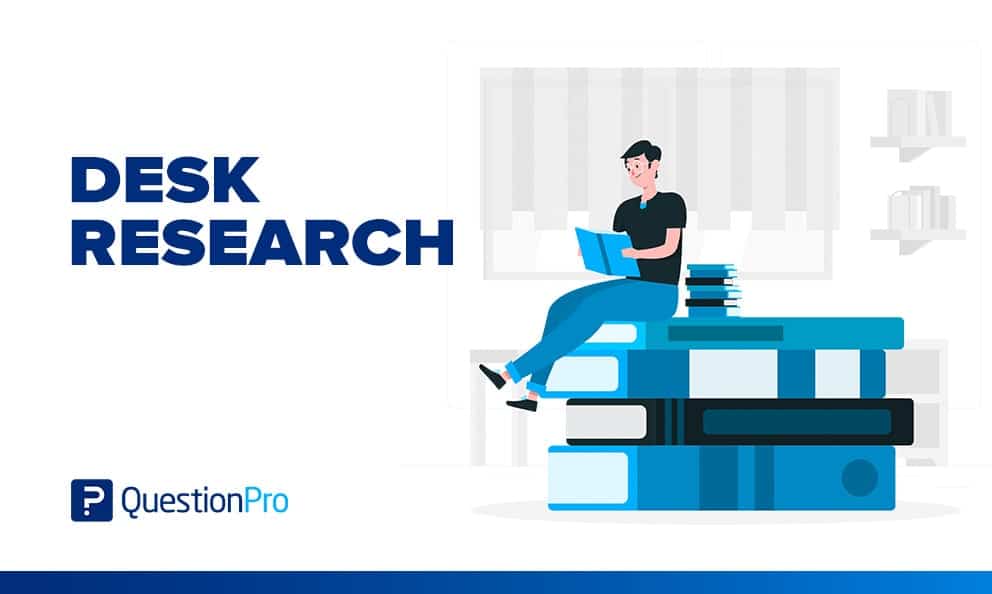
What is desk research?
Desk research is a type of research that is based on the material published in reports and similar documents that are available in public libraries, websites, data obtained from surveys already carried out, etc. Some organizations also store data that can be used for research purposes.
It is a research method that involves the use of existing data. These are collected and summarized to increase the overall effectiveness of the investigation.
Secondary research is much more cost-effective than primary research , as it uses existing data, unlike primary research, in which data is collected first-hand by organizations, companies, or may employ a third party to obtain the data in your name.
LEARN ABOUT: Data Management Framework
Desk research examples
Being a cost-effective method, desk research is a popular choice for businesses and organizations as not everyone can pay large sums of money to conduct research and collect data. That is why it’s also called “ documentary research “.
Here are some more common secondary research methods and examples:
1. Data available on the Internet: One of the most popular ways to collect data for desk research is through the Internet. The information is available and can be downloaded with just one click.
This data is practically free or you may have to pay a negligible amount for it. Websites have a lot of information that companies or organizations can use to meet their research needs. However, you need to consider a reliable website to collect information.
2. Government and non-government agencies: Data for secondary research can also be collected from some government and non-government agencies. There will always be valuable and relevant data that companies or organizations can use.
3. Public libraries: Public libraries are another good source to search for data by doing desk research. They have copies of important research that has been done before. They are a store of documents from which relevant information can be extracted.
The services offered at these public libraries vary. Most often, they have a huge collection of government publications with market statistics, a large collection of business directories, and newsletters.
4. Educational Institutions: The importance of collecting data from educational institutions for secondary research is often overlooked. However, more research is done in colleges and universities than in any other business sector.
The data collected by universities is mainly used for primary research. However, companies or organizations can go to educational institutions and request data.
5. Sources of business information: Newspapers, magazines, radio and television stations are a great source of data for desk research. These sources have first-hand information on economic developments, the political agenda, the market, demographic segmentation and similar topics.
Companies or organizations can request to obtain the most relevant data for their study. Not only do they have the opportunity to identify your potential customers, but they can also learn the ways to promote their products or services through these sources, as they have a broader scope.
Differences between primary research and Desk Research
How to do a desk research.
These are the steps to follow to conduct a desk investigation:
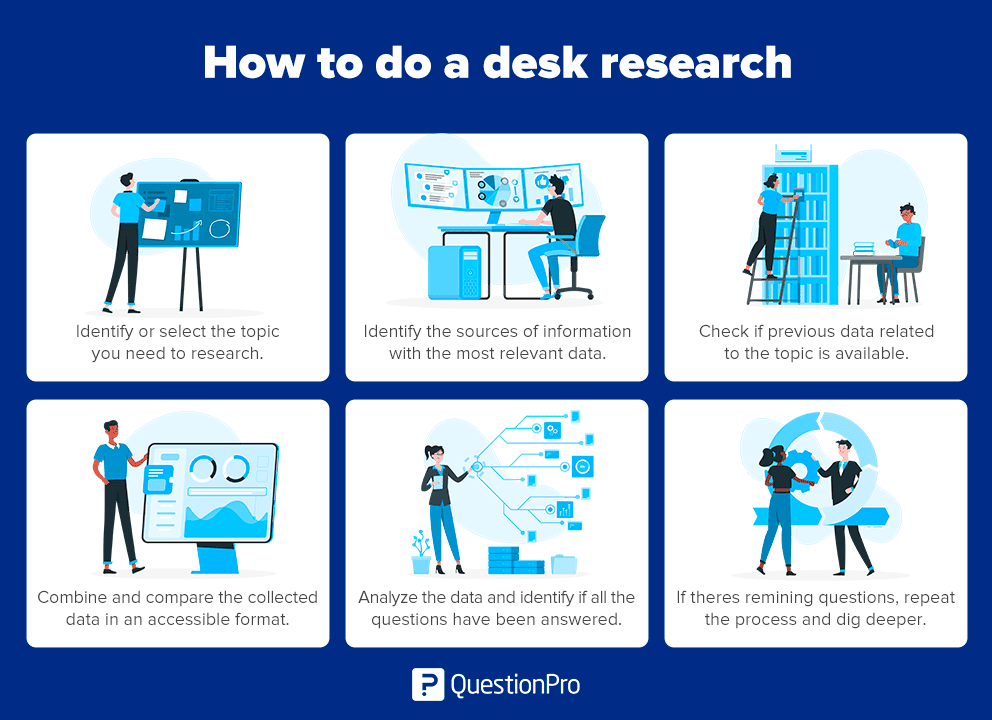
- Identify the research topic: Before you begin, identify the topic you need to research. Once done, make a list of the attributes of the research and its purpose.
- Identify research sources: Subsequently, explain the sources of information that will provide you with the most relevant data applicable to your research.
- Collect existing data: Once the sources of information collection have been narrowed, check to see if previous data is available that is closely related to the topic. They can be obtained from various sources, such as newspapers, public libraries, government and non-government agencies, etc.
- Combine and compare: Once the data is collected, combine and compare it so that the information is not duplicated and put it together in an accessible format. Make sure to collect data from authentic sources so you don’t get in the way of your investigation.
- Analyze data: Analyze the data that is collected and identify if all the questions have been answered. If not, repeat the process to dig deeper into practical ideas.
- Most of the information is secondary research and readily available. There are many sources from which the data you need can be collected and used, as opposed to primary research, where data must be collected from scratch.
- It is a less expensive and time-consuming process, as the required data is readily available and does not cost much if it is extracted from authentic sources.
- The data that is collected through secondary or desktop research gives organizations or companies an idea about the effectiveness of primary research. Thus, a hypothesis can be formed and the cost of conducting the primary research can be evaluated.
- Doing desk research is faster due to the availability of data. It can be completed in a few weeks, depending on the objective of the companies or the scale of the data required.
Disadvantages
- Although the data is readily available, the credibility and authenticity of the available information must be assessed.
- Not all secondary data resources offer the latest reports and statistics. Even when they are accurate, they may not be up to date.
Desk research is a very popular research method, because it uses existing and reliable data that can be easily obtained. This is a great benefit for businesses and organizations as it increases the effectiveness of the investigation.
QuestionPro provides the best market research platform to uncover complex insights that can propel your business to the forefront of your industry.
START A FREE TRIAL
MORE LIKE THIS

Data Information vs Insight: Essential differences
May 14, 2024

Pricing Analytics Software: Optimize Your Pricing Strategy
May 13, 2024

Relationship Marketing: What It Is, Examples & Top 7 Benefits
May 8, 2024

The Best Email Survey Tool to Boost Your Feedback Game
May 7, 2024
Other categories
- Academic Research
- Artificial Intelligence
- Assessments
- Brand Awareness
- Case Studies
- Communities
- Consumer Insights
- Customer effort score
- Customer Engagement
- Customer Experience
- Customer Loyalty
- Customer Research
- Customer Satisfaction
- Employee Benefits
- Employee Engagement
- Employee Retention
- Friday Five
- General Data Protection Regulation
- Insights Hub
- Life@QuestionPro
- Market Research
- Mobile diaries
- Mobile Surveys
- New Features
- Online Communities
- Question Types
- Questionnaire
- QuestionPro Products
- Release Notes
- Research Tools and Apps
- Revenue at Risk
- Survey Templates
- Training Tips
- Uncategorized
- Video Learning Series
- What’s Coming Up
- Workforce Intelligence
An official website of the United States government
Here’s how you know
Official websites use .gov A .gov website belongs to an official government organization in the United States.
Secure .gov websites use HTTPS A lock ( Lock Locked padlock ) or https:// means you’ve safely connected to the .gov website. Share sensitive information only on official, secure websites.
Guidance on building better digital services in government
Discovery operations guide
Desk research.
Knowing what others have already discovered means you can contribute new, original thought to an existing knowledge base.
Reading time: 3 minutes
Start with what’s there
Where to start is one of the hardest questions to answer when researching a problem. Depending on the type of project, you’ll need to look into a variety of research types to learn what’s been done before. Understanding past research will help you to focus on where you can do new research, and how best to frame that research.
This process is known as benchmarking. Essentially, it means doing traditional desk-based research to find out what others have discovered in the field you’re investigating. You should also look for research that supports, or does not support, items that you might already know, or think you know, about the subject.
This process both informs and gives direction to your work. If you know where others have been, you can build off of their work, and contribute to the overall knowledge in this topic through your original research.
Academic Research can help you uncover what people have already done in your topic area. Use search engines like Google Scholar or Academia.edu, and publications like the Harvard Business Review, the Stanford Social Innovation Review, and the MIT Technology Review to find projects related to your subject. Read the abstracts of articles that sound interesting, then check those papers’ bibliographies to find additional articles and works.
Statistical Research can help you properly frame your area of interest. For example, historical statistics will allow you to understand whether your problem frame should widen out or focus in. Always evaluate the source of your data to maintain data hygiene and fidelity.
- Data hygiene refers to the quality of the data collection and interpretation.
- Data fidelity refers to the precision with which the data has been recorded. If the data collection or interpretation is illogical or messy, move on and find better data on which to base your work.
Internal-to-Organization Research is helpful if your project relates to a program or set of programs already underway in your organization. Look at those programs to see what’s already being done. Talk to the program leaders, review their documents, and, if possible, observe them working in the field. This process will help you frame your approach to avoid duplication of work, and increase your contribution to work already in process.
External-to-Organization Research means seeking out and studying existing programs outside of your organization. Look across all sectors: private, non-profit, academic, or other government organizations. Learning what others are developing will help you frame your project in a way that builds on this work. As you notify others of your work, you will also contribute to the community of knowledge on your subject.
Organize your research
Always properly cite and document desk research sources. Follow the examples below; either print them, or take a screenshot and mark them up digitally.
Keep all your citations organized and together. Keeping track of research sources means you can quickly and easily find content that you would like to reference or cite in a final report or communication.
Header image credit: Miray Celebi Kaba/DigitalVision Vectors via Getty Images
Join 60,000 others in government and subscribe to our newsletter — a round-up of the best digital news in government and across our field.
Digital.gov
An official website of the U.S. General Services Administration
Just one more step to your free trial.
.surveysparrow.com
Already using SurveySparrow? Login
By clicking on "Get Started", I agree to the Privacy Policy and Terms of Service .
This site is protected by reCAPTCHA and the Google Privacy Policy and Terms of Service apply.
Enterprise Survey Software
Enterprise Survey Software to thrive in your business ecosystem
NPS® Software
Turn customers into promoters
Offline Survey
Real-time data collection, on the move. Go internet-independent.
360 Assessment
Conduct omnidirectional employee assessments. Increase productivity, grow together.
Reputation Management
Turn your existing customers into raving promoters by monitoring online reviews.
Ticket Management
Build loyalty and advocacy by delivering personalized support experiences that matter.
Chatbot for Website
Collect feedback smartly from your website visitors with the engaging Chatbot for website.
Swift, easy, secure. Scalable for your organization.
Executive Dashboard
Customer journey map, craft beautiful surveys, share surveys, gain rich insights, recurring surveys, white label surveys, embedded surveys, conversational forms, mobile-first surveys, audience management, smart surveys, video surveys, secure surveys, api, webhooks, integrations, survey themes, accept payments, custom workflows, all features, customer experience, employee experience, product experience, marketing experience, sales experience, hospitality & travel, market research, saas startup programs, wall of love, success stories, sparrowcast, nps® benchmarks, learning centre, apps & integrations, testimonials.
Our surveys come with superpowers ⚡
Blog General
Desk Research 101: Definition, Methods, and Examples
Parvathi vijayamohan.
2 March 2023
Table Of Contents
If you ever had to do a research study or a survey at some point, you would have started with desk research .
There’s another, more technical name for it – secondary research. To rewind a bit, there are two types of research: primary , where you go out and study things first-hand, and secondary , where you explore what others have done.
But what is desk research? How do you do it, and use it? This article will help you:
- Understand what is desk-based research
- Explore 3 examples of desk research
- Make note of 6 common desk research methods
- Uncover the advantages of desk research
What is desk research?
Desk research can be defined as a type of market/product research, where you collect data at your desk (metaphorically speaking) from existing sources to get initial ideas about your research topic.
Desk research or secondary research is an essential process from a business’s point of view. After all, secondary data sources are such an easy way to get information about their industry, trends, competitors, and customers.
Types of secondary data sources
#1. Internal secondary data: This consists of data from within the researcher’s company. Examples include:
- Company reports and presentations
- Case studies
- Podcasts, vlogs and blogs
- Press releases
- Websites and social media
- Company databases and data sets
#2. External secondary data: Researchers collect this from outside their respective firms. Examples include:
- Digital and print publications
- Domain-specific publications and periodicals
- Online research communities, like ResearchGate
- Industry speeches and conference presentations
- Research papers
What are examples of desk research in action?
#1. testing product-audience match.
Let’s say you’re developing a fintech product. You want to do a concept testing study. To make sure you get it right, you’re interested in finding out your target audience’s attitudes about a topic in your domain. For e.g., Gen Z’s perceptions about money in the US.
With a quick Google search, you get news articles, reports, and research studies about Gen Z’s financial habits and attitudes. Also, infographics and videos provide plenty of quantitative data to draw on.
These steps are a solid starting point for framing your concept testing study. You can further reduce the time spent on survey design with a Concept Testing Survey Template . Sign up to get free access to this and hundreds more templates.
Please enter a valid Email ID.
14-Day Free Trial • No Credit Card Required • No Strings Attached
#2. Tracking the evolution of the Web
As we wade into the brave new world of Web 5.0 , there are quite a few of us who still remember static websites, flash animations, and images sliced up into tables.
If you want to refresh your memory, you can hop on the Wayback Machine . iI gives you access to over 20 years of web history, with over 635 billion web pages saved over time!
Curiosity aside, there are practical use cases for this web archive. SEO specialist Artur Bowsza explores this in his fantastic article Internet Archeology with the Wayback Machine .
Imagine you’re investigating a recent drop in a website’s visibility. You know there were some recent changes in the website’s code, but couldn’t get any details. Or maybe you’re preparing a case study of your recent successful project, but the website has changed so much, and you never bothered to take a screenshot. Wouldn’t it be great to travel back in time and uncover the long-forgotten versions of the website – like an archaeologist, discovering secrets from the past but working in the digital world?
#3. Repairing a business reputation
As a brand, you hope that a crisis never happens. But if hell does break loose, having a crisis management strategy is essential.
If you want examples, just do a Google search. From Gamestop getting caught in a Reddit stock trading frenzy to Facebook being voted The Worst Company of 2021 , we have seen plenty of brands come under fire in recent years.
Some in-depth desk research can help you nail your crisis communication. Reputation management expert Lida Citroen outlines this in her article 7 Ways to Recover After a Reputation Crisis .
Conduct a thoughtful and thorough perception sweep of the reputation hit’s after-effects. This includes assessing digital impact such as social media, online relationships and Google search results. The evaluation gives you a baseline. How serious is the situation? Sometimes the way we believe the situation to be is not reflected in the business impact of the damage.
6 popular methods of desk research
#1. the internet.
No surprise there. When was the last time you checked a book to answer the burning question of “is pineapple on pizza illegal?” (it should be).
However, choosing authentic and credible sources from an information overload can be tricky. To help you out, the Lydia M. Olson Library has a 6-point checklist to filter out low-quality sources. You can read them in detail here .
#2. Libraries
You have earned some serious street cred if your preferred source is a library. But, jokes apart, finding the correct information for your research topic in a library can be time-consuming.
However, depending on which library you visit, you will find a wealth of verifiable, quotable information in the form of newspapers, magazines, research journals, books, documents, and more.
#3. Governmental and non-governmental organizations
NGOs, and governmental agencies like the US Census Bureau, have valuable demographic data that businesses can use during desk research. This data is collected using survey tools like SurveySparrow .
You may have to pay a certain fee to download or access the information from these agencies. However, the data obtained will be reliable and trustworthy.
#4. Educational institutions
Colleges and universities conduct plenty of primary research studies every year. This makes them a treasure trove for desk researchers.
However, getting access to this data requires legwork. The procedures vary according to the institution; among other things, you will need to submit an application to the relevant authority and abide by a data use agreement.
#5. Company databases
For businesses, customer and employee data are focus areas all on their own. But after the pandemic, companies are using even more applications and tools for the operations and service sides.
This gives businesses access to vast amounts of information useful for desk research and beyond. For example, one interesting use case is making employee onboarding more effective with just basic employee data, like their hobbies or skills.
#6. Commercial information media
These include radio, newspapers, podcasts, YouTube, and TV stations. They are decent sources of first-hand info on political and economic developments, market research, public opinion and other trending subjects.
However, this is also a source that blurs the lines between advertising, information and entertainment. So as far as credibility is concerned, you are better off supporting this data with additional sources.
Why is desk research helpful?
Desk research helps with the following:
- Better domain understanding. Before doing market research, running a usability test, or starting any user-centric project, you want to see what companies have done in the past (in related areas if not the same domain). Then, instead of learning everything from scratch, you can review their research, success, and mistakes and learn from that.
- Quicker opportunity spotting. How do you know if you’ve found something new? By reviewing what has gone before. By doing this, you can spot gaps in the data that match up with the problem you’re trying to solve.
- More money saved . Thanks to the internet, most of the data you need is at your fingertips, and they are cheaper to compile than field data. With a few (search and mental) filters, you can quickly find credible sources with factual information.
- More time saved . You have less than 15 minutes with your research participant. Two minutes if you’re doing an online survey. Do you really want to waste that time asking questions that have already been answered elsewhere? Lack of preparation can also hurt your credibility.
- Better context. Desk research helps to provide focus and a framework for primary research. By using desk research, companies can also get the insight to make better decisions about their customers and employees.
- More meaningful data. Desk research is the yin to the yang of field research – they are both required for a meaningful study. That’s why desk research serves as a starting point for every kind of study.
This brings us to the last question.
How do you do desk research?
Good question! In her blog post , Lorène Fauvelle covers the desk research process in detail.
Y ou can also follow our 4-step guide below:
- First, start with a general topic l ike “handmade organic soaps”. Read through existing literature about handmade soaps to see if there is a gap in the literature that your study can fill.
- Once you find that gap, it’s time to specify your research topic . So in the example above, you can specify it like this: “What is the global market size for handmade organic soaps”?
- Identify the relevant secondary data for desk research. This only applies if there is past data that could be useful for your research.
- Review the secondary data according to:
- The aim of the previous study
- The author/sponsors of the study
- The methodology of the study
- The time of the research
Note: One more thing about desk research…
Beware of dismissing research just because it was done a few years ago. People new to research often make the mistake of viewing research reports like so many yogurts in a fridge where the sell-by dates have expired. Just because it was done a couple of years ago, don’t think it’s no longer relevant. The best research tends to focus on human behaviour, and that tends to change very slowly.
- Dr David Travis, Desk Research: The What, Why and How
Wrapping up
That’s all folks! We hope this blog was helpful for you.
How have you used desk research for your work? Let us know in the comments below.
Growth Marketer at SurveySparrow
Fledgling growth marketer. Cloud watcher. Aunty to a naughty beagle.
You Might Also Like
10 360 degree feedback examples for coworkers and teammates, 8 survicate alternatives for efficient feedback collection, hat-trick in the bag: surveysparrow wins g2’s fastest growing product award for 2022.
Leave us your email, we wont spam. Promise!
Start your free trial today
No Credit Card Required. 14-Day Free Trial
Power your desktop research with stunning surveys
Don't rely on the past alone. get insights into the future with powerful feedback software. try surveysparrow for free..
14-Day Free Trial • No Credit card required • 40% more completion rate
Hi there, we use cookies to offer you a better browsing experience and to analyze site traffic. By continuing to use our website, you consent to the use of these cookies. Learn More
- St. Olaf Libraries
- Research Guides
Welcome to the St. Olaf Libraries & IT
- Research & Writing Desk
- Rolvaag Circulation Desk
- Rolvaag Floor Plan
- Catalyst (The Library Catalog)
- Materials Not at St. Olaf
Research & Writing Tutors
- Archives & Special Collections
- Music Library
- NAHA (Norwegian American Historical Association)
- Flaten Art Museum
- IT Help Desk
- Online Access to NYT and WSJ This link opens in a new window
From the Libraries

The Library offers free access to the New York Times and Wall Street Journal . Follow the links to sign up.
Research Party!

Research Librarian

Peer Research & Writing Tutors are available for drop-in support at any stage of your research and/or writing process. Tutors can help you brainstorm ideas and keywords, help you find good sources for your research, organize your research, and help with citation questions. They can also help you strengthen arguments, develop evidence, structure your writing, and help you learn to identify and correct patterns of error on your own.
Tutors can be found at the Research & Writing desk (next to Circulation) from 8-10 pm Sunday through Thursday.
For writing support outside the above hours, consider making an appointment at The Writing Desk located in Tomson Hall.
- << Previous: Materials Not at St. Olaf
- Next: Archives & Special Collections >>
- Last Updated: Feb 5, 2024 9:59 AM
- URL: https://libraryguides.stolaf.edu/welcome
- Desk Research: Definition, Types, Application, Pros & Cons

If you are looking for a way to conduct a research study while optimizing your resources, desk research is a great option. Desk research uses existing data from various sources, such as books, articles, websites, and databases, to answer your research questions.
Let’s explore desk research methods and tips to help you select the one for your research.
What Is Desk Research?
Desk research, also known as secondary research or documentary research, is a type of research that relies on data that has already been collected and published by others. Its data sources include public libraries, websites, reports, surveys, journals, newspapers, magazines, books, podcasts, videos, and other sources.
When performing desk research, you are not gathering new information from primary sources such as interviews, observations, experiments, or surveys. The information gathered will then be used to make informed decisions.
The most common use cases for desk research are market research , consumer behavior , industry trends , and competitor analysis .
How Is Desk Research Used?
Here are the most common use cases for desk research:
- Exploring a new topic or problem
- Identifying existing knowledge gaps
- Reviewing the literature on a specific subject
- Finding relevant data and statistics
- Analyzing trends and patterns
- Evaluating competitors and market trends
- Supporting or challenging hypotheses
- Validating or complementing primary research
Types of Desk Research Methods
There are two main types of desk research methods: qualitative and quantitative.
- Qualitative Desk Research
Analyzing non-numerical data, such as texts, images, audio, or video. Here are some examples of qualitative desk research methods:
Content analysis – Examining the content and meaning of texts, such as articles, books, reports, or social media posts. It uses data to help you identify themes, patterns, opinions, attitudes, emotions, or biases.
Discourse analysis – Studying the use of language and communication in texts, such as speeches, interviews, conversations, or documents. It helps you understand how language shapes reality, influences behavior, constructs identities, creates power relations, and more.
Narrative analysis – Analyzing the stories and narratives that people tell in texts, such as biographies, autobiographies, memoirs, or testimonials. This allows you to explore how people make sense of their experiences, express their emotions, construct their identities, or cope with challenges.
- Quantitative Desk Research
Analyzing numerical data, such as statistics, graphs, charts, or tables.
Here are common examples of quantitative desk research methods:
Statistical analysis : This method involves applying mathematical techniques and tools to numerical data, such as percentages ratios, averages, correlations, or regressions.
You can use statistical analysis to measure, describe, compare, or test relationships in the data.
Meta-analysis : Combining and synthesizing the results of multiple studies on a similar topic or question. Meta-analysis can help you increase the sample size, reduce the margin of error, or identify common findings or discrepancies in data.
Trend analysis : This method involves examining the changes and developments in numerical data over time, such as sales, profits, prices, or market share. It helps you identify patterns, cycles, fluctuations, or anomalies.
Examples of Desk Research
Here are some real-life examples of desk research questions:
- What are the current trends and challenges in the fintech industry?
- How do Gen Z consumers perceive money and financial services?
- What are the best practices for conducting concept testing for a new fintech product?
- Documentary on World War II and its effect on Austria as a country
You can use the secondary data sources listed below to answer these questions:
Industry reports and publications
- Market research surveys and studies
- Academic journals and papers
- News articles and blogs
- Podcasts and videos
- Social media posts and reviews
- Government and non-government agencies
How to Choose the Best Type of Desk Research
The main factors for selecting a desk research method are:
- Research objective and question
- Budget and deadlines
- Data sources availability and accessibility.
- Quality and reliability of data sources
- Your data analysis skills
Let’s say your research question requires an in-depth analysis of a particular topic, a literature review may be the best method. But if the research question requires analysis of large data sets, you can use trend analysis.
Differences Between Primary Research and Desk Research
The main difference between primary research and desk research is the source of data. Primary research uses data that is collected directly from the respondents or participants of the study. Desk research uses data that is collected by someone else for a different purpose.
Another key difference is the cost and time involved. Primary research is usually more expensive, time-consuming, and resource-intensive than desk research. However, it can also provide you with more specific, accurate, and actionable data that is tailored to your research goal and question.
The best practice is to use desk-based research before primary research; it refines the scope of the work and helps you optimize resources.
Read Also – Primary vs Secondary Research Methods: 15 Key Differences
How to Conduct a Desk Research
Here are the four main steps to conduct desk research:
- Define Research Goal and Question
What do you want to achieve with your desk research? What problem do you want to solve or what opportunity do you want to explore? What specific question do you want to answer with your desk research?
- Identify and Evaluate Data Sources
Where can you find relevant data for your desk research? How relevant and current are the data sources for your research? How consistent and comparable are they with each other?
You can evaluate your data sources based on factors such as-
– Authority: Who is the author or publisher of the data source? What are their credentials and reputation? Are they experts or credible sources on the topic?
– Accuracy: How accurate and precise is the data source? Does it contain any errors or mistakes? Is it supported by evidence or references?
– Objectivity: How objective and unbiased is the data source? Does it present facts or opinions? Does it have any hidden agenda or motive?
– Coverage: How comprehensive and complete is the data source? Does it cover all aspects of your topic? Does it provide enough depth and detail?
– Currency: How current and up-to-date is the data source? When was it published or updated? Is it still relevant to your topic?
- Collect and Analyze Your Data
How can you collect your data efficiently and effectively? What tools or techniques can you use to organize and analyze your data? How can you interpret your data with your research goal and question?
- Present and Report Your Findings
How can you communicate your findings clearly and convincingly? What format or medium can you use to accurately record your findings?
You can use spreadsheets, presentation slides, charts, infographics, and more.
Advantages of Desk Research
- Cost Effective
It is cheaper and faster than primary research, you don’t have to collect new data or report them. You can simply analyze and leverage your findings to make deductions.
- Prevents Effort Duplication
Desk research provides you with a broad and thorough overview of the research topic and related issues. This helps to avoid duplication of efforts and resources by using existing data.
- Improves Data Validity
Using desk research, you can compare and contrast various perspectives and opinions on the same topic. This enhances the credibility and validity of your research by referencing authoritative sources.
- Identify Data Trends and Patterns
It helps you to identify new trends and patterns in the data that may not be obvious from primary research. This can help you see knowledge and research gaps to offer more effective solutions.
Disadvantages of Desk Research
- Outdated Information
One of the main challenges of desk research is that the data may not be relevant, accurate, or up-to-date for the specific research question or purpose. Desk research relies on data that was collected for a different reason or context, which may not match the current needs or goals of the researcher.
- Limited Scope
Another limitation of desk research is that it may not provide enough depth or insight into qualitative aspects of the market, such as consumer behavior, preferences, motivations, or opinions.
Data obtained from existing sources may be biased or incomplete due to the agenda or perspective of the source.
Read More – Research Bias: Definition, Types + Examples
- Data Inconsistencies
It may also be inconsistent or incompatible with other data sources due to different definitions or methodologies.
- Legal and Technical Issues
Desk research data may also be difficult to access or analyze due to legal, ethical, or technical issues.
How to Use Desk Research Effectively
Here are some tips on how to use desk research effectively:
- Define the research problem and objectives clearly and precisely.
- Identify and evaluate the sources of secondary data carefully and critically.
- Compare and contrast different sources of data to check for consistency and reliability.
- Use multiple sources of data to triangulate and validate the findings.
- Supplement desk research with primary research when exploring deeper issues.
- Cite and reference the sources of data properly and ethically.
Desk research should not be used as a substitute for primary research, but rather as a complement or supplement. Combine it with primary research methods, such as surveys, interviews, observations, experiments, and others to obtain a more complete and accurate picture of your research topic.
Desk research is a cost-effective tool for gaining insights into your research topic. Although it has limitations, if you choose the right method and carry out your desk research effectively, you will save a lot of time, money, and effort that primary research would require.

Connect to Formplus, Get Started Now - It's Free!
- desk research
- market research
- primary vs secondary research
- research bias
- secondary research
- Moradeke Owa

You may also like:
Projective Techniques In Surveys: Definition, Types & Pros & Cons
Introduction When you’re conducting a survey, you need to find out what people think about things. But how do you get an accurate and...

Judgmental Sampling: Definition, Examples and Advantages
Introduction Judgment sampling is a type of non-random sampling method used in survey research and data collection. It is a method in...
25 Research Questions for Subscription Pricing
After strategically positioning your product in the market to generate awareness and interest in your target audience, the next step is...
What is Thematic Analysis & How to Do It
Introduction Thematic Analysis is a qualitative research method that plays a crucial role in understanding and interpreting data. It...
Formplus - For Seamless Data Collection
Collect data the right way with a versatile data collection tool. try formplus and transform your work productivity today..

- OUR SERVICES
- ORDER PROCESS
Main Services
- Dissertations
- Capstone Projects
- Research Proposals
- Research Papers
- Rewriting Services
Outstanding Help
- Live Assistance 24/7
- Genuine Research Experts
- Highest Scholarly Standards
- 100% Confidential
- 100% Plagiarism Free
- Secure Payment

The Best Research Consultants
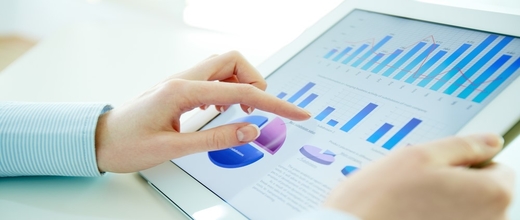
Expert Data Analysis Services

Guaranteed Satisfaction

Literature Review Experts

Academic Project Writing Experts

Professional Nursing Writers
- DISSERTATIONS WRITING Dissertations Writing Thesis Writing Capstone Writing Research Proposals
- COURSEWORK WRITING Assignments Writing Coursework Writing Research Papers Writing Lab Reports Writing Speech Writing Help
- PAPER REVIEW HELP Paper Editing Paper Proofreading Paper Rewriting Paper Paraphrasing Formatting & Structuring Assistance
- ADMISSION PAPERS HELP Admission Essays Statements Of Purpose Personal Statements CV & Resume Writing Cover Letter Help
English Papers Services

Expert English Literature Writers Who Understand Your Research Paper Writing Needs
We boast of a pool of English papers writers, all of whom are holders of graduate degrees and specialize in the different genres of English papers. This is a sensitive subject and we rely on qualification, competence, and experience to guarantee you the best. The English literature papers are probed by editors who are even more experienced for proofreading purposes. We also have a customer support panel that is always on standby and reachable by means of email, phone, and live chat.
In English papers assignments, a student may be asked to discuss any issues or come up with a write-up given a topic or just a few guidelines. We understand clients’ instructions easily and are used to the needs of the various academic institutions right from colleges, universities and graduate schools. We have a history of surpassing expectations in preparing English papers for students at the different levels of learning; including masters and PhD.
Flawless and Plagiarism Free English Research Paper Writing Services

Plagiarism is an offense everywhere in the world. In providing English research papers writing services , our English literature research paper writers ensure that the papers are properly referenced crediting all sources used in the study. We assure our customers of privacy and confidentiality. In addition, we charge fair prices for our superb English literature papers writing help and we also offer discounts to return customers.

- Aeronautics
- Computer Studies
- Cultural Studies
- Engineering
- Information Systems
- International Relations
- Literature Review
- Political Science
- Programming
- Social Science
- Biochemistry
- Chapter 1: Thesis Introduction
- Chapter 2: Thesis Literature Review
- Chapter 3: Thesis Research Methods
- Chapter 4: Thesis Results & Data Presentation
- Chapter 5: Thesis Discussions & Analysis
- Chapter 6: Thesis Conclusion & Recommendations
- Lost your password?

- APA Referencing Help
- Harvard Referencing Help
- MLA Referencing Help
- Chicago Referencing Help
- Privacy Policy
- Terms & Conditions
- Client's Testimonials
Academic Assignments Help
Academic Writing Service
Accounting Papers
Annotated Bibliography Help
Anthropology Papers
APA Literature Review Help
Best Papers
Business Papers
Buy Dissertation
Buy Original Essay
Buy Research Paper
Buy Term Paper
Capstone Proposal
Case Study Writing Help
College Essay
College Papers
Critical Essay
Article Review Help
Custom Essay
Custom Essay Writing
Custom Papers
Custom Research Paper
Custom Term Paper
Custom Thesis
Customized Essay Help
Descriptive Essay Help
Dissertation Abstract
Dissertation Proofreading Help
Dissertation Proposal
Dissertation Topics
Dissertation Writers
Dissertation Writing Tips
Do My Essay
Do My Paper
Do My Report
Cover Letter Help
Doctoral Dissertation
Education Papers
Essay Writing Tips
GIS Assignment assistance
Graduate Essay
Graduate Papers
Help Develop Thesis Topics
Information Management Systems
Management Papers
Master's Thesis
Medical Papers
Non-Plagiarized Essay
Nursing Papers
Persuasive Essay Help
Philosophy Papers
Position Papers Help
Professional Thesis Writers
Powerpoint Presentation Help
Proposal Writing Tips
Qualitative Thesis/Dissertation Help
Quantitative Thesis/Dissertation Help
Research Paper Topics
Science Papers
Statistical Analysis Using SPSS Help
Term Paper Help
Thesis Hypothesis Help
Thesis Proposal
Thesis Rationale Help
Thesis Writers
Thesis Writing Tips
UK English Native Writers
University Essay Help
University Papers
US English Native Writers
Write My Paper
Book Report Writing Assistance
(Stanford users can avoid this Captcha by logging in.)
- Send to text email RefWorks EndNote printer
Doing qualitative desk-based research : a practical guide to writing an excellent dissertation
Available online, at the library.

Education Library (Cubberley)
The Education Library is closed for construction. Request items for pickup at another library.
More options
- Find it at other libraries via WorldCat
- Contributors

Description
Creators/contributors, contents/summary.
- The structure of this book and how to use it
- Part 1: Preparing the ground 1. Introduction 2. Choosing a topic 3. Keeping a research journal 4. Writing a strong research proposal
- Part 2: Assembling the structure 5. The importance of your research question 6. Context, background and introduction 7. Selecting high quality data resources 8. Literature review 9. Desk-based methodologies 10. Ethics 11. Data analysis and techniques 12. Writing conclusions and recommendations
- Part 3: Keeping your tent stable and secure 13. Getting the support you need 14. Managing desk-based research.
- (source: Nielsen Book Data)
Bibliographic information
Browse related items.
- Stanford Home
- Maps & Directions
- Search Stanford
- Emergency Info
- Terms of Use
- Non-Discrimination
- Accessibility
© Stanford University , Stanford , California 94305 .

What is Desk Research? A Guide + Examples
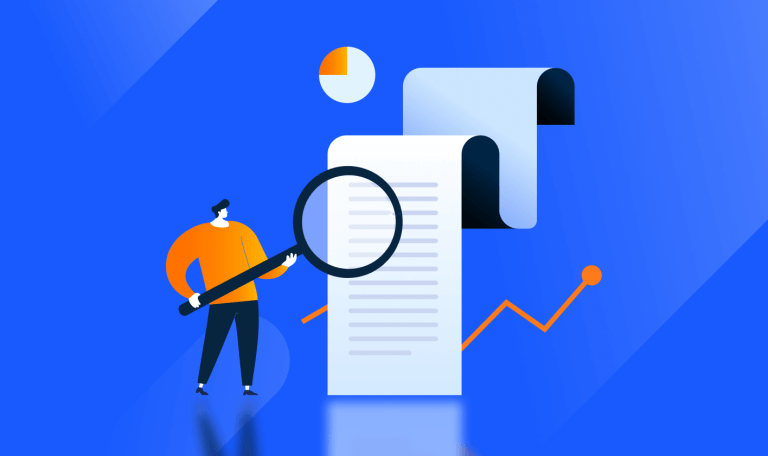
Desk research can help you make data-driven decisions, define or adapt strategies, and uncover untapped market potential to drive growth – when it’s done right!
Nowadays, we have all the information we need at our fingertips; but knowing where to find the right data quickly is key.
So, what is desk research? What does it involve, and how can Similarweb Research Intelligence help?
Let’s find out.

What is desk research?
Desk research is a type of market research that uses existing data to support or validate outcomes and conclusions. Also known as secondary research , it’s a cost-effective way to obtain relevant data from a broad range of channels.
How is desk research used?
From small start-ups to established businesses, doing desk research provides you with crucial insights into trends, competitors, and market size . Whatever you do, desk research can help with product positioning and guide data-driven business decisions that help you become the ultimate competitor and find new ways to grow.
According to the latest data on the Internet of Things , around 130 new devices connect to the web every second. Stats on the state of data show we create and consume data at an exponential rate–data interactions will only continue to rise.

Primary vs. secondary research – what’s the difference?
Most market research methods fall into either primary or secondary research. When we talk about desk research, we tend to focus only on secondary methods. However, most primary research can also be done remotely, from a desk.
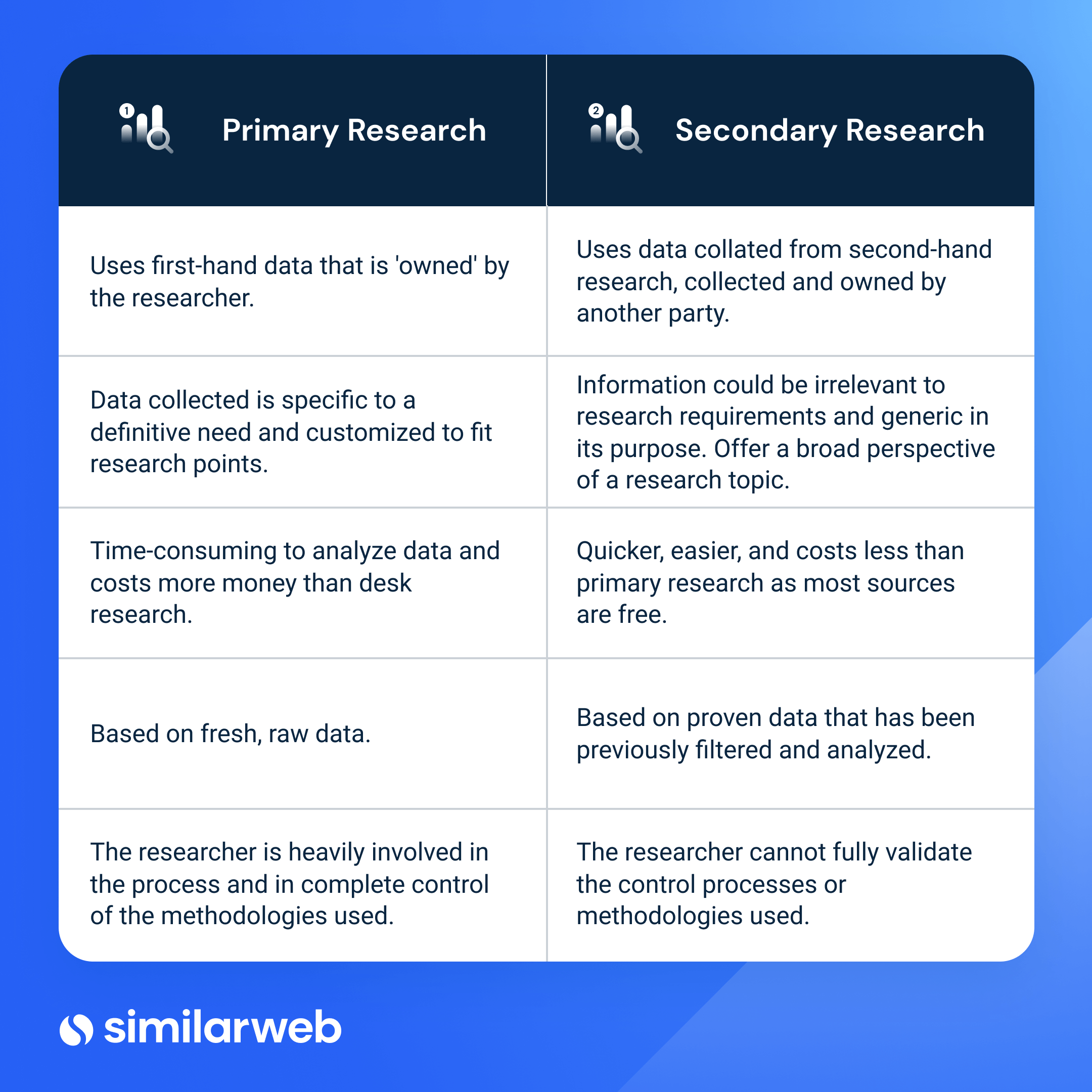
Primary research is self-conducted research that gathers data to answer questions. It usually involves going directly to a source, such as a customer or a prospect. Compared to secondary research, it takes longer, costs more, and demands more resources. Primary research methods include interviews, market research surveys , questionnaires, competitor reviews, market mapping , focus groups, etc.
Secondary research is the synthesis or summary of existing research using previously gained information from various sources. Most market research starts with secondary research: It aims to provide a researcher or analyst with a basis of knowledge formed from existing data. Secondary research methods include collecting data from the internet, government databases, reports, and academic journals, to name just a few.
Pros and cons of desk research
As with any type of market research, you need to choose the right method to deliver the best outcome for your research goal. Desk research is advantageous for several reasons, but it won’t always suit every market research project. Market research best practice tells us that we should use desk-based research before primary research – as this helps to reduce or refine the scope of the work before the second, more costly phase.
Here’s a summary of the pros and cons of desk research.
Advantages of desk-based research
Doing secondary market research is highly beneficial; here’s why.
- Low cost – most secondary research sources are low-to-no cost.
- Speed – as the data already exists, data collection is quick.
- Clarity – desk research drives & add-value to primary research actions.
- Scalability – due to the large datasets used in secondary research.
- Availability – pre-collected data is readily available to analyze.
- Insightful – get valuable insights and help resolve some initial research questions.
Disadvantages of desk-based research
As any good researcher will attest, it’s always good to look at a topic from every angle. Here are a few things to consider before starting any secondary research process.
- Out of-date data – consider if the coverage dates of the research are relevant. In a fast-moving market, having access to up-to-date information could be critical.
- Lack of perceived control over the data – secondary research is undertaken by a third party; as such, methodology controls need to be reviewed with caution.
- No exclusivity – desk research data is widely available and can be used by other researchers.
- Verification & interpretation – particularly when working with large data sets, it can take time to analyze and review to ensure the information is suitable for your research.
Types of desk-based research
Nowadays, you can do most market research from a desk. Here, I’ll focus solely on secondary research methods: Where finding and using the right resources is key. The data you use needs to be up-to-date and should always come from a trusted source.
Desk research methods – internal data resources
Before stepping into external research, look for any relevant internal sources. This data can often prove invaluable, and it’s a great place to start gathering insights that only you can see. The information is already yours, so aside from the fact it won’t cost a dime, it’s data your rivals won’t have access to.

Sources of internal information that can help you do desk research include:
- Historical campaign and sales analysis: Everything from website traffic and conversions through to sales. Accessible through your own analytics platform(s).
- Website and mobile application data: Your own platforms can also tell you where users are – such as the device split between mobile and desktop.
- Existing customer information: audience demographics , product use, and efficiency of service.
- Previous research conducted by other analysts: Even if the research seems unrelated, there could be indicative information within.
Desk research methods – external data resources
Using external data sources for desk research is an ideal way to get information about market trends, and explore a new topic.

- The internet: A virtual aggregator of all secondary research sources – always validate findings with credible sources.
- Commercial resources: Research associations and company reports usually cost money but give you data that’s specific to your industry/aim.
- Trade association reports: To see if there’s a trade association of interest, do a quick search online or use the Encyclopedia of Associations , the Directory of Associations , or the National Trade and Professional Associations Directory
- Industry Experts: Expert consultancy is an efficient way of getting information from someone who has ‘been there, done that.’ Also, consider ‘influencers.’
- Research associations & journals: Most research associations are independent and offer bespoke, specialized reports.
- Media coverage: TV, radio, newspapers, and magazines can often help uncover facts and relevant media stories related to your topic.
- Market research intelligence software: Platforms like Similarweb give you actionable insights into industry and competitors’ trends. With access to mobile app intelligence, you get a complete picture of the digital landscape.
- Government & non-government agencies: In the US, the biggest generator of data is the federal government. US Census Bureau , Congressional Research Service , US Government Publishing Office , US Small Business Administration , and the Department of Education . Most information from these sources is free.
- Local government sites: A reliable source to find data on population density or employment trends.
- Public library records: Access data via the Digital Public Library of America in the US or the National Archives in the UK.
- Competitor information: Sign-up for mailing lists, view comparison reports, and read online reviews.
- Educational institutions: Academic research papers and journals are well-researched. If you can find a relevant one, you’ll likely get solid data from credible sources.
How to choose the best type of desk research
With so many freely-available sources online for desk-based research; it’s easy to feel overwhelmed. The best guidance I can offer is to keep a list of key questions you are trying to answer with this research, and consider:
- What are you hoping to learn from your research?
- Why is this data relevant?
- Is there an action you can take from this information?
- How up-to-date is the data you are using?
Always keep the questions you’re trying to answer front of mind. It’ll help you stay focused and keep your desk research on the right track. Time and money will usually determine the right type of desk research to use, but, even then, it’s important to stay focussed on where you spend your time vs. the return on that investment.
Inspiration: This article outlines some of the best market research questions to ask.
How to do desk research in five steps
Follow these steps to guide you through doing desktop research:
1. Clearly define your research topic Identify your topic and its purpose, then list any relevant research attributes.
2. Select appropriate resources Make a list of sources that’ll provide relevant information for your research topic.
3. Look for existing data Once you’ve collated your research sources, look for internal and external data relevant to your research topic. Remember to only use data from authentic sources.
4. Collate, compare & assemble Next, you’ll need to collate all the data you’ve obtained, remove any duplication, and bring it together into a usable format.
5. Data analysis The final step of doing desk research is to analyze the data. At this point, you should be able to see if your research questions have been answered. If any questions remain unanswered, go back to step 2, and look for alternative resources that will help you get clearer insights.

Desk-based research tools
Online resources are by far your most valuable asset for doing secondary research. However, software like Similarweb Digital Intelligence , Google Analytics (GA), and Google Search Console (GSC) can save you time and give you a more visually-appealing view of relevant data.
My list of go-to tools for desk research includes:
- Google Analytics & Search Console – your own site’s performance and visitor stats.
- Similarweb Digital Research Intelligence – uncover market, industry & competitor trends across web, mobile, and apps.
- Tableau – data visualization for presenting your findings.
- Competitor data – on rival’s websites, newsletters, and social media accounts.
Read: The best market research tools of 2023
Note that GA and GSC are free to use but limited in terms of what you can see outside your own site. With Similarweb, you can access virtually limitless industry-wide data.
Stop Guessing, Start Analyzing
Get actionable insights for desk research here
How Similarweb helps with desk research
Here are just a few examples of how Similarweb Digital Research Intelligence can help you with secondary research.
- Benchmarking yourself against your industry – Benchmarking suite
- Understand how competitor websites and apps perform – Company research module
- Get a full picture of your industry – Market research & industry analysis tools
- Understand how apps are impacting your market – App Intelligence
- Analyze consumer behavior – Audience analysis tool
- Understand the complete customer journey – Consumer journey tracker
Using research intelligence tools will save you time and money while removing bias from the data – ultimately giving you clarity and a complete view of the digital world relevant to your research topic.
Success Story: See how Airbnb uses Similarweb to reveal growth opportunities in new markets .
Desk research examples with Similarweb
A good example of desk research in action is looking into an industry to uncover market leaders, trends, relevant search trends, and an overview of a complete industry. Using the market analysis module in Similarweb, you can find out exactly what’s happening in your market, and make data-driven decisions that’ll help you increase market share , and drive faster, more sustainable business growth.
For this particular desk research example, I chose the airline industry.
Let’s dive in.
Industry Overview
See a snapshot of industry traffic and engagement metrics . This data is typically based on Similarweb’s index of the top 100 websites in a chosen vertical. You can easily create a custom industry , allowing you to do competitive benchmarking against specific companies in your market.

Industry Leaders
Quickly see who is winning in an industry using the Market quadrant analysis graph and industry leaders table. Analyze top-performing websites in your vertical, and dive into their traffic and engagement performance to view bounce rates, visit duration, monthly visits, month-on-month changes, unique visitors, pages/visits, and traffic share .

Industry Trends
Analyze trends in near real-time so you can take action when it matters most–not a quarter later. Create a personalized view of your industry for in-depth analysis and make informed decisions that will help you grow your market share.

Marketing Channels
Access valuable traffic metrics and insights for each marketing channel. See data for direct, social, display ads, paid search, referrals, emails, and organic traffic channels and evaluate performance for each. Uncover opportunities to grow your own traffic share, evaluate engagement and quality of traffic, and identify trends over time.

Search Trends (within an industry)
Discover trending topics and emerging search terms in any industry. View what’s trending, search volume, % change, volume trend, and traffic leaders for both branded and non-branded search in your sector. Use these insights to get an understanding of market demand, search intent, and audience interests within a specific category, brand, or product.

Demographics
Gain crucial insights into the audiences visiting your website, your competitors’ websites, and your industry as a whole. See gender and age distribution across web, mobile, or combined traffic channels, and compare your demographics with that of your rivals.

The market analysis element of Similarweb will help you answer some of your most important research questions, such as:
- How a specific industry grew over time
- Who the top and emerging players are in your industry
- Which products or services are trending and/or what are consumers searching for
- What demographics are relevant to you, and your competitors
The app intelligence module completes the picture and gives you a broad view of the digital landscape across your market. You can quickly see how apps are impacting your industry, and look at download, engagement, installs, ranking, and more.

Here, I’m sticking with the airline industry to establish whether or not android or iOS is the best fit for a new app. Immediately, I can see there are between 1-1.5M monthly active users on iOS vs. an equivalent of around 350,000k on Android.
Like what you see? Take a tour of Similarweb for yourself.
Discover industry insights for desk research here
Wrapping up
Good desk research helps you quickly uncover key information that can shape and steer successful market research projects. When done right, you’ll be able to answer questions and discover crucial data about your industry, competitors, and key trends to consider while building a strategy for growth.
Asking the right research questions from the onset and keeping these at the forefront of your mind throughout will save time and help direct your market analysis in the right direction.
Is desk-based research free?
Depending on the method used, desktop research can be done for free. If you require industry or government agency reports, these often carry a charge but are more likely to be free from bias when compared to commercially produced reports that (sometimes) receive sponsorship.
Which businesses can utilize secondary desk research?
Desk-based research can uncover crucial insights into market trends, market sizing, and competitors. The information can be used by any size business to help guide strategic decision-making and help refine a product’s positioning.
Should you do secondary research before primary research?
Absolutely, yes. Secondary research should always come before primary or field research. The formative research phase helps pinpoint where more in-depth primary research is required. Desk research can also verify and support findings from field research but should not replace primary research–as they are each utilized under different circumstances.
Who does desk-based research?
Desk research can ‘technically’ be done by anyone, but it’s typically performed by a researcher, an analyst, or a marketing professional. Good market research has solid foundational data to drive critical business decisions. Experienced researchers and analysts are best-placed to spot opportunities, trends, and patterns when the stakes are this high.
So, while anybody can access secondary data free of charge, investing the necessary resources to do things right to get the most out of the process is essential.
Related Posts

US Financial Outlook: Top Trends to Watch in 2024

Top Economic Trends in Australia to Watch in 2024

What Is Data Management and Why Is It Important?

What is a Niche Market? And How to Find the Right One

The Future of UK Finance: Top Trends to Watch in 2024

From AI to Buy: The Role of Artificial Intelligence in Retail
Wondering what similarweb can do for your business.
Give it a try or talk to our insights team — don’t worry, it’s free!

- The Writing Desk
- Academic Success
Tutors listen, ask questions, and provide guidance for any writer, on any paper, at any stage of the writing process.
Mon – Thur 9 a.m. – 9 p.m. Fri 9 a.m. – 4:30 p.m. Sun noon – 9 p.m.
In a tutoring session, you may work collaboratively with your tutor to:
- Brainstorm ideas
- Strengthen arguments
- Develop evidence
- Organize paragraphs
- Learn proofreading strategies
Some writing tutors are trained to offer speaking support to brainstorm ideas, outline a speech, rehearse a presentation, polish your delivery skills, or lead/participate in a class discussion. Search “speaking support” in the Writing Desk appointment schedule in WCOnline .
Research and Writing Tutors are available in Rolvaag Library Sunday-Thursday from 8-10pm, by drop in or appointment. Search the “Research and Writing Tutor” schedule in WCOnline .
New to WCOnline? Follow these instructions to create a WCOnline account .

Want to become a Writing Tutor ? First and second year students can apply starting in November each year. Look for open positions and other student employment opportunities at the Academic Success Center.
Faculty resources.
- Tutor Blasts
- Sign up for Course-connected Tutoring
Writing Resources
Research Writing Templates ↓
Tips for writing in college →
Meet the Writing Desk coordinator
Bridget A Draxler (she, her, hers)
Associate Director of Writing, Speaking, and Academic Support; Adjunct Assistant Professor of Writing
Office Hours: Make an appointment
- Academic Success Center
- Writing Program

Research Desk
- Edit source
- View history
Knowledge of blueprints is shared between all vampires in a clan. Vampires not in the clan may also steal knowledge by interacting with the Research Desk.
- 1.1 Consumables
- 1.3 Weapons
- 1.5 Structures
Blueprints [ ]
Consumables [ ].
Weapons [ ]
Structures [ ]
- Gravel Paths
- Assortment of fine Paintings
- Vases and Plants
- Stone Ornaments
- Assortment of Windows
- Simple Garden Planters
- Simple Carpets
- 'Hearth' Wall Panels
- Decorative Stone Walls

What Is Desk Research? Meaning, Methodology, Examples
Apr 4, 2024
10 min. read
Research in the digital age takes many shapes and forms. There are traditional methods that collect first-hand data via testing, focus groups, interviews, and proprietary data. And then there are ways to tap into the time and effort others have put into research, playing “armchair detective” by conducting desk research .
Desk research gives you a shortcut to insights by pulling data from other resources, which is crucial for understanding the customer journey . It takes less time and is more cost-effective compared to conducting primary market research . Most importantly, it can give you the consumer insights you need to make important business decisions.
Let’s explore the official desk research definition along with types of desk research, methodologies, examples, and how to do desk research effectively.
Desk Research Meaning: What is Desk Research?
Advantages and limitations of desk research, desk research methodology and methods, how to conduct desk research effectively, best practices for desk research, applications of desk research, how to conduct desk research with meltwater.
Desk Research definition: Desk research, also known as secondary research or complementary research , involves gathering information and data from existing sources, such as books, journals, articles, websites, reports, and other published materials. Users analyze and synthesize information from already available information.
Companies use desk research at the onset of a project to gain a better understanding of a topic, identify knowledge gaps, and inform the next stages of research. It can also supplement original findings and provide context and background information.
Desk research gives marketers attractive advantages over traditional primary research, but it’s not without its shortcomings. Let’s explore these in more detail.
Desk research advantages
- Quick insights. Conducting interviews, focus groups, panels, and tests can take weeks or even months, along with additional time to analyze your findings. With desk research, you can pull from existing information to gain similar results in less time.
- Cost-effectiveness. Desk market research is usually less expensive than primary research because it requires less time and fewer resources. You don’t have to recruit participants or administer surveys, for example.
- Accessibility. There’s a world of data out there ready for you to leverage, including online databases, research studies, libraries, and archives.
- Diverse sources. Desk market research doesn’t limit you to one information source. You can use a combination of sources to gain a comprehensive overview of a topic.
Want to see how Meltwater can supercharge your market research efforts? Simply fill out the form at the bottom of this post and we'll be in touch.
Desk research limitations
- Data quality. Marketers don’t know how reliable or valid the data is, which is why it’s important to choose your sources carefully. Only use data from credible sources, ideally ones that do not have a financial interest in the data’s findings.
- Less control. Users are at the mercy of the data that’s available and cannot tailor it to their needs. There’s no opportunity to ask follow-up questions or address specific research needs.
- Potential bias. Some sources may include biased findings and/or outdated information, which can lead to inaccurate conclusions. Users can mitigate the risk of bias by relying only on credible sources or corroborating evidence with multiple sources.
Desk research typically involves multiple sources and processes to gain a comprehensive understanding of an idea. There are two main desk methodologies: qualitative research and quantitative research .
- Qualitative research refers to analyzing existing data (e.g., interviews, surveys, observations) to gain insights into people's behaviors, motivations, and opinions. This method delves deeper into the context and meaning behind the data.
- Quantitative research refers to analyzing and interpreting numerical data to draw conclusions and make predictions. This involves quantifying patterns and trends to find relationships between variables.
Both desk research methodologies use a variety of methods to find and analyze data and make decisions.
Examples of desk research methods include but are not limited to:
- Literature review. Analyze findings from various types of literature, including medical journals, studies, academic papers, books, articles, online publications, and government agencies.
- Competitor analysis . Learn more about the products, services, and strategies of your competitors, including identifying their strengths and weaknesses, market gaps, and overall sentiment.
- Social listening . Discover trending topics and sentiments on social media channels to learn more about your target audience and brand health.
- Consumer intelligence . Understand your audience based on digital behaviors, triggers, web usage patterns, and interests.
- Market research . Analyze market reports, industry trends, demographics, and consumer buying patterns to identify market opportunities and strengthen your positioning.
Now let’s look at how to use these methods to their full potential.
While desk research techniques can vary, they all follow a similar formula. Here’s how you can conduct desk research effectively, even if it’s your first time.

1. Define your objective
Desk research starts with a specific question you want to answer.
In marketing , your objective might be to:
- Learn about Gen Z buying behaviors for home goods
- Gauge the effectiveness of influencer marketing for food brands
- Understand the pain points of your competitor’s customers
These questions can help you find credible sources that can provide answers.
2. Choose reliable data sources
Based on your objectives, start collecting secondary data sources that have done the heavy lifting for you. Examples include:
- Market reports (often available as gated assets from research companies)
- Trade publications
- Academic journals
- Company websites
- Government publications and data
- Online databases and resources, such as Google Scholar
- Secondary research companies or market research tools like Meltwater and Linkfluence
- Online blogs, articles, case studies, and white papers from credible sources
In many cases, you’ll use a combination of these source types to gain a thorough answer to your question.
3. Start gathering evidence
Go through your source materials to start answering your question. This is usually the most time-intensive part of desk research; you’ll need to extract insights and do some fact-checking to trust those insights.
One of your top priorities in this step is to use reliable sources. Here are some ways you can evaluate sources to use in your desk research:
- Consider the authority and reputation of the source (e.g., do they have expertise in your subject)
- Check whether the content is sponsored, which could indicate bias
- Assess whether the data is current
- Evaluate the publisher’s peer review processes , if applicable
- Review the content’s citations and references
- Seek consensus among multiple sources
- Use sources with built-in credibility, such as .gov or .edu sites or well-known medical and academic journals
If your source materials have supporting elements, such as infographics, charts, or graphs, include those with your desk research.
4. Cross-reference your findings with other sources
For desk research to be effective, you need to be able to trust the data you find. One way to build trust is to cross-reference your findings with other sources.

For instance, you might see who else is citing the same sources you are in their research. If there are reputable companies using those same sources, you might feel they’re more credible compared to a random internet fact that lacks supporting evidence.
5. Draw your conclusions & document the results
Organize and synthesize your findings in a way that makes sense for your objectives. Consider your stakeholders and why the information is important.
For example, the way you share your research with an internal team might have a different structure and tone compared to a client-facing document.
Bonus tip: Include a list of sources with your documentation to build credibility in your findings.
When conducting desk research, follow these best practices to ensure a reliable and helpful outcome.
Organize and manage your research data
It’s helpful to have a system to organize your research data. This way, you can easily go back to review sources or share information with others. Spreadsheets, databases, and platforms like Meltwater for market research are great options to keep your desk research in one place.
Create actionable recommendations
It’s not enough to state your findings; make sure others know why the data matters. Share the data along with your conclusions and recommendations for what to do next.
Remember, desk research is about decision-making, not the data itself.
Document your sources
Whether you choose to share your sources or not, it’s best practice to document your sources for your own records. This makes it easier to provide evidence if someone asks for it or to look back at your research if you have additional questions.
Now for the big question: How can marketers apply desk research to their day-to-day tasks?
Try these desk research examples to power your marketing efforts.
Use desk research for market intelligence
Markets, preferences, and buying habits change over time, and marketers need to stay up to date on their industries. Desk research can provide market intelligence insights, including new competitors, trends, and audience segments that may impact your business.
Apply desk research in competitive analysis
Desk research can help you identify your true competitors and provide more context about their strengths and weaknesses. Marketers can use this intel to improve their positioning and messaging. For instance, a competitor’s weak spot might be something your company does well, and you can emphasize this area in your messaging.
Include desk research in content strategy and audience analysis
Desk research can support consumer intelligence by helping you define various audience segments and how to market to them. These insights can help you develop content and creative assets on the right topics and in the right formats, as well as share them in the best channels to reach your audience.
Emerging technologies like Meltwater's integrated suite of solutions have a strong impact on desk research, helping you streamline how you find and vet data to support your desired topics.
Using a combination of data science, AI, and market research expertise, Meltwater offers the largest media database of its kind to help marketers learn more about their audience and how to connect with them. Millions of real-time data points cover all niches, topics, and industries, giving you the on-demand insights you need.
Our clients use Meltwater for desk research to measure audience sentiment and identify audience segments as well as to conduct competitor analysis , social listening , and brand monitoring , all of which benefit from real-time data.
Learn more about how you can leverage Meltwater as a research solution when you request a demo by filling out the form below:
Continue Reading

How To Do Market Research: Definition, Types, Methods

How to Gain a Sustainable Competitive Advantage with Porter's 3 Strategies

What Are Consumer Insights? Meaning, Examples, Strategy
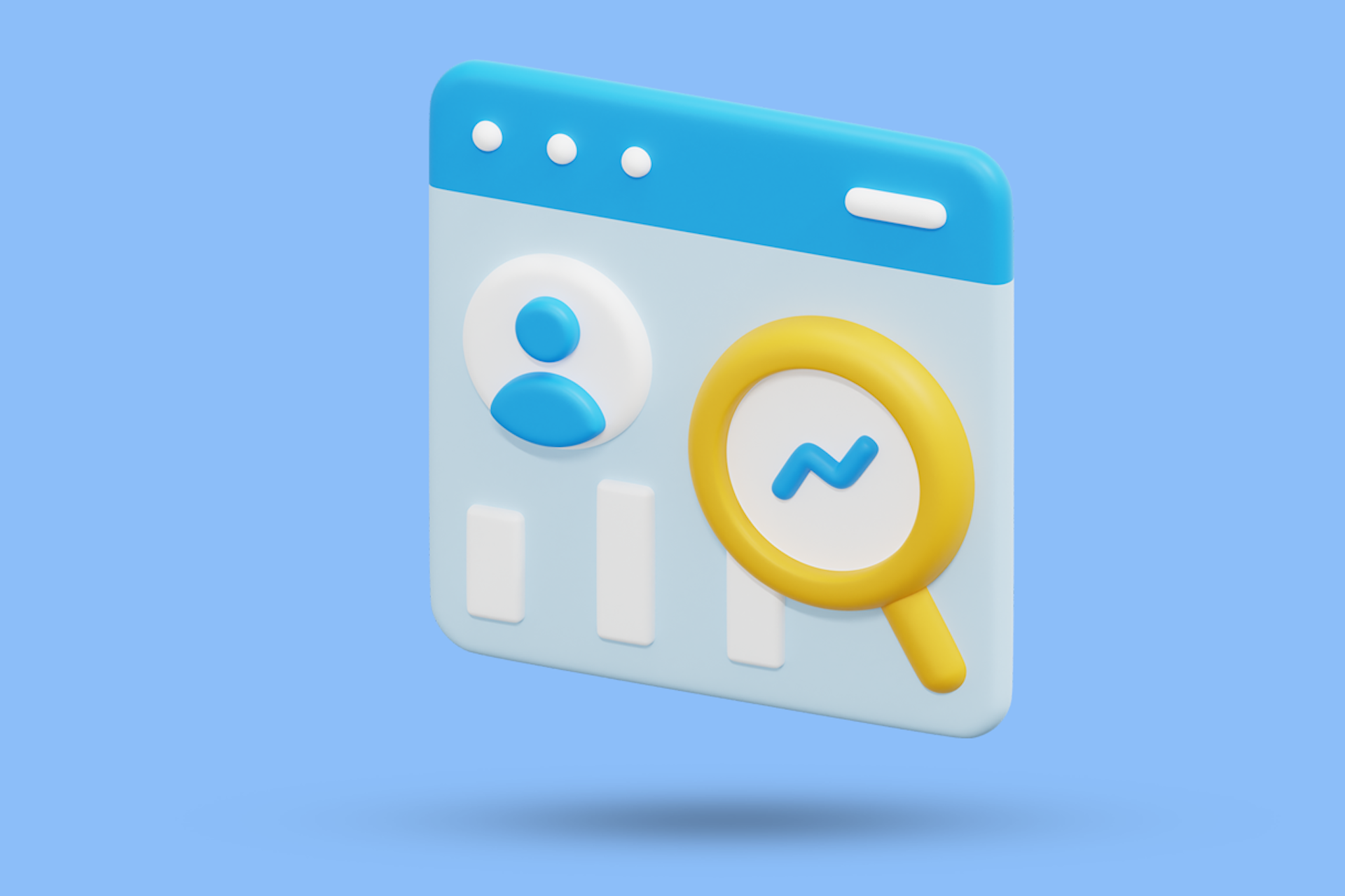
Consumer Intelligence: Definition & Examples
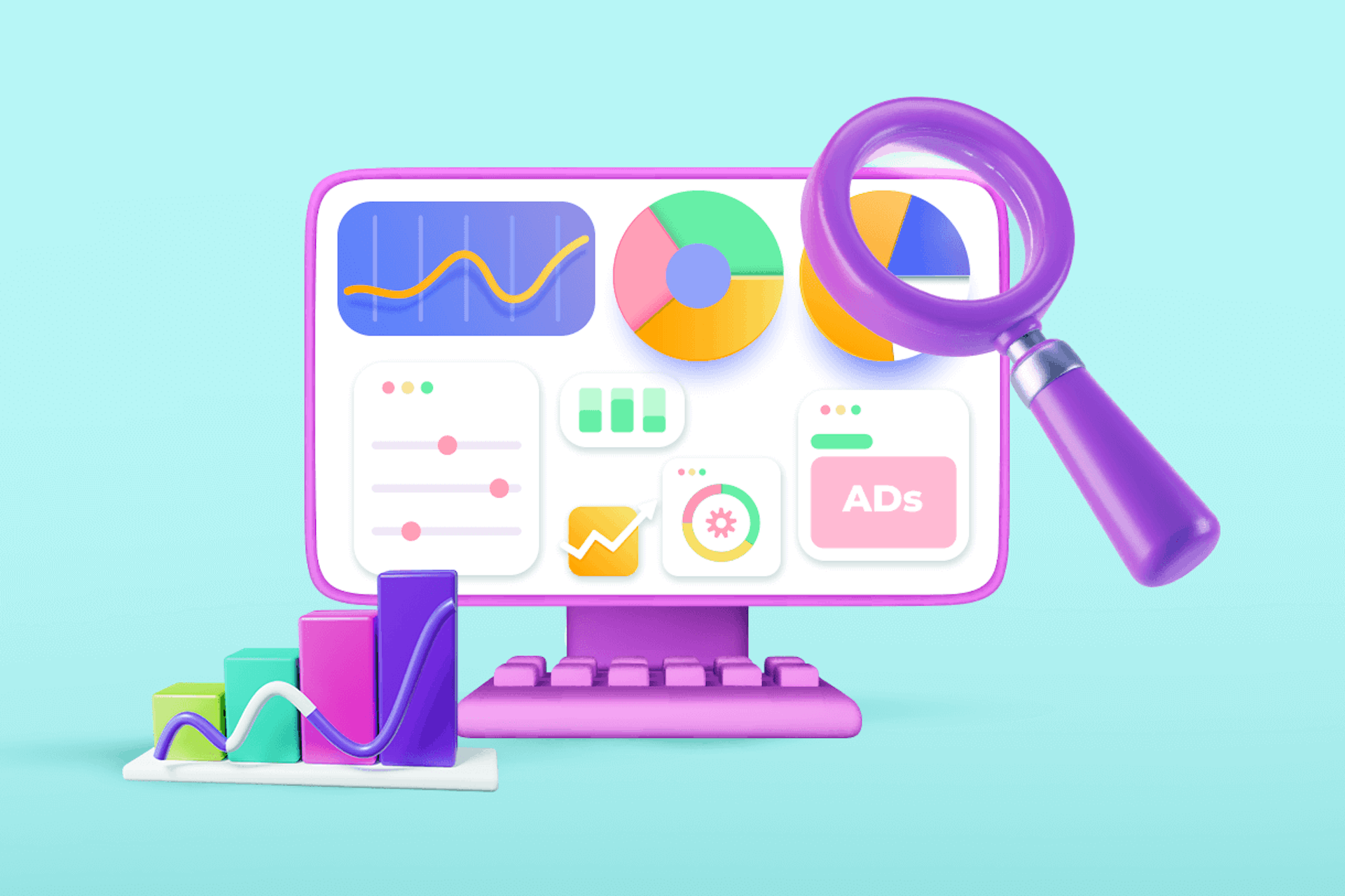
The 13 Best Market Research Tools

Virtual Tour
Experience University of Idaho with a virtual tour. Explore now
- Discover a Career
- Find a Major
- Experience U of I Life
More Resources
- Admitted Students
- International Students
Take Action
- Find Financial Aid
- View Deadlines
- Find Your Rep

Helping to ensure U of I is a safe and engaging place for students to learn and be successful. Read about Title IX.
Get Involved
- Clubs & Volunteer Opportunities
- Recreation and Wellbeing
- Student Government
- Student Sustainability Cooperative
- Academic Assistance
- Safety & Security
- Career Services
- Health & Wellness Services
- Register for Classes
- Dates & Deadlines
- Financial Aid
- Sustainable Solutions
- U of I Library

- Upcoming Events
Review the events calendar.
Stay Connected
- Vandal Family Newsletter
- Here We Have Idaho Magazine
- Living on Campus
- Campus Safety
- About Moscow

The largest Vandal Family reunion of the year. Check dates.
Benefits and Services
- Vandal Voyagers Program
- Vandal License Plate
- Submit Class Notes
- Make a Gift
- View Events
- Alumni Chapters
- University Magazine
- Alumni Newsletter

U of I's web-based retention and advising tool provides an efficient way to guide and support students on their road to graduation. Login to VandalStar.
Common Tools
- Administrative Procedures Manual (APM)
- Class Schedule
- OIT Tech Support
- Academic Dates & Deadlines
- U of I Retirees Association
- Faculty Senate
- Staff Council
College of Graduate Studies
Physical Address: Morrill Hall Room 104
Mailing Address: College of Graduate Studies University of Idaho 875 Perimeter Drive MS 3017 Moscow, ID 83844-3017
Phone: 208-885-2647
Email: [email protected]
Thesis and Dissertation Resources
You will find all you need to know about starting and completing your thesis or dissertation right here using ETD (Electronic submission of Dissertations and Theses).
- Create your ETD account
- General ETD Help from Proquest
- Theses and Dissertations template (Word)
- Example of a thesis
- Note: COGS at this time is unable to provide any troubleshooting support or tutorials on LaTeX. Please use only if you are knowledgeable and familiar with the program.
- Writing Assistance Services
- Format Review Services
- Survey of Earned Doctorates (for Ph.D. students only)
- University Repository Agreement Form (PDF)
- Dates and Deadlines
- Sign up with ORCID (take 5 minutes to establish your academic identity)
- U of I Theses and Dissertations , 2013-present
- Data and Digital Services Workshops
- Open Access, Scholarly Communication, and Copyright LibGuide
- Quick Guide - Committee Electronic Review/Authorization - Student View pdf
- Quick Guide - Committee Electronic Review/Authorization - Faculty View pdf
- ETD Checklist jpg
- T/D Format/Component Checklist pdf
- Handbook - reference pdf
- Handbook - example docx
A .gov website belongs to an official government organization in the United States.
A lock ( ) or https:// means you've safely connected to the .gov website. Share sensitive information only on official, secure websites.
- Data and Statistics on ADHD
- Free Materials on ADHD
- Attention-Deficit / Hyperactivity Disorder Articles
- Clinical Care and Treatment
Attention-Deficit / Hyperactivity Disorder (ADHD)

About Attention-Deficit / Hyperactivity Disorder (ADHD)

Is it ADHD?

Symptoms of ADHD

Treatment of ADHD

ADHD Information and Resources for States

School Changes — Helping Children with ADHD
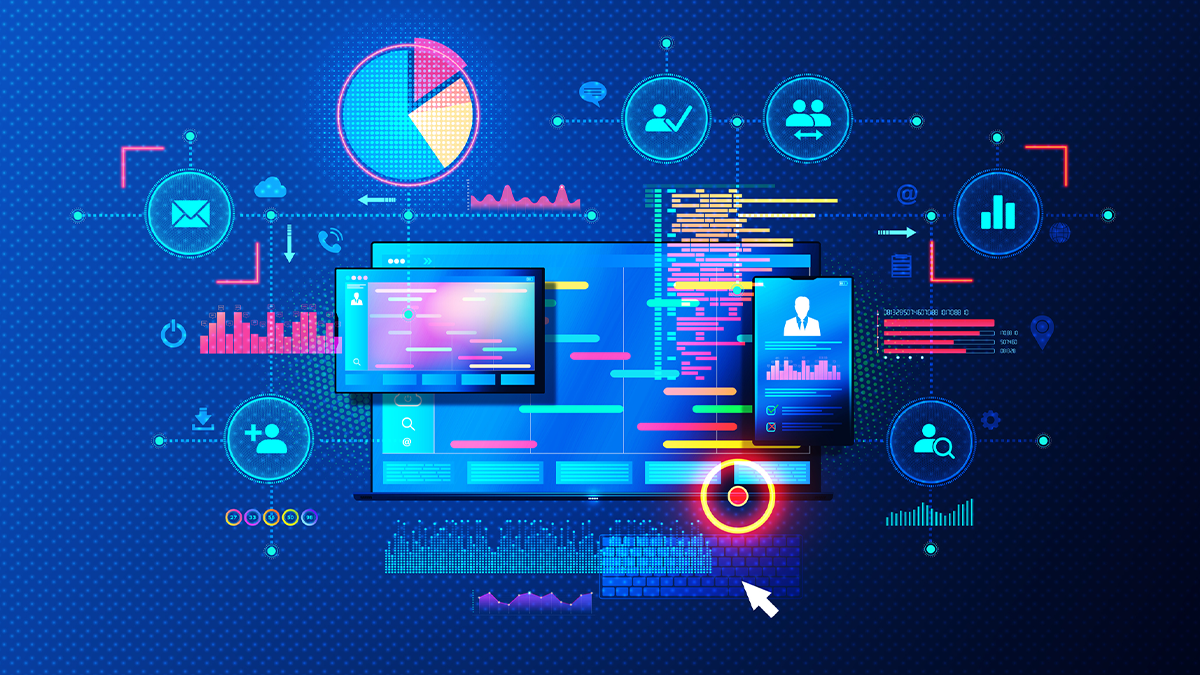
CDC's Attention-Deficit / Hyperactivity Disorder (ADHD) site includes information on symptoms, diagnosis, treatment, data, research, and free resources.
For Everyone
Health care providers.
The Ultimate Guide: How To Travel From Moscow Airport To The City
- Last updated May 18, 2024
- Difficulty Advanced
- Category Travel

Are you planning a trip to Moscow and wondering how to get from the airport to the city? Look no further! In this ultimate guide, we will walk you through all the different transportation options available, from taxis to public transportation. Whether you're a seasoned traveler or it's your first time in the Russian capital, we've got you covered. So grab your luggage and get ready to explore Moscow hassle-free!
What You'll Learn
Introduction, transportation options from moscow airport to the city center, tips for navigating moscow's public transportation system, considerations for choosing a taxi or rideshare service.

When arriving at Moscow's airports, it is important to know how to travel to the city center. Moscow has three main airports: Sheremetyevo, Domodedovo, and Vnukovo. Each airport has its own transportation options, including taxis, buses, and trains. In this guide, we will provide detailed instructions on how to travel from Moscow airports to the city, so you can start your journey hassle-free. Whether you are a first-time visitor or a seasoned traveler, understanding the transportation infrastructure of Moscow will ensure a smooth and enjoyable experience. So let's dive in and discover the best ways to get from the airport to the city center!
Exploring Georgia with a Schengen Visa: All You Need to Know
You may want to see also
If you are planning a trip to Moscow and wondering about the transportation options from the airport to the city center, you are in the right place. Moscow has several airports serving both domestic and international flights, and each airport has its own transportation options. In this guide, we will discuss the different ways to travel from the Moscow airports to the city center.
Sheremetyevo International Airport (SVO):
Sheremetyevo Airport is the largest airport in Moscow and is located about 29 kilometers northwest of the city center. Here are the transportation options available:
- Aeroexpress Train: The Aeroexpress train is the fastest and most convenient way to reach the city center from Sheremetyevo Airport. The train runs every 30 minutes and takes around 35-40 minutes to reach Belorussky Railway Station. From there, you can easily transfer to the Moscow Metro or take a taxi to your final destination.
- Taxi: Taxis are available at the airport, and you can either pre-book one or find them at the designated taxi stands. It is important to choose official taxi services or use ride-hailing apps like Yandex.Taxi for a safe and reliable ride.
- Bus: Several bus routes connect Sheremetyevo Airport with different parts of Moscow. The bus stops can be found at the terminal exits, and it is advisable to check the routes and schedules before your arrival.
Domodedovo International Airport (DME):
Located about 42 kilometers south of Moscow, Domodedovo Airport is another major airport in the city. Here are the transportation options available from this airport:
- Aeroexpress Train: Similar to Sheremetyevo Airport, Domodedovo also has an Aeroexpress train service that operates between the airport and Paveletsky Railway Station. The journey takes around 40-45 minutes, and from Paveletsky station, you can transfer to the Moscow Metro or take a taxi.
- Taxi: Official taxis and ride-hailing services are available at Domodedovo Airport. Always opt for licensed taxis or trusted ride-hailing apps to ensure a smooth and safe journey.
- Bus: Several bus routes connect the airport with various locations in Moscow. The bus stops can be found outside the terminal buildings, and it is advisable to check the bus routes and schedules beforehand.
Vnukovo International Airport (VKO):
Vnukovo Airport is the closest airport to the city center, located approximately 28 kilometers southwest of Moscow. Here are the transportation options available:
- Aeroexpress Train: The Aeroexpress train from Vnukovo Airport runs to Kievsky Railway Station in the city center. The journey takes around 35-40 minutes, and from Kievsky Station, you can easily transfer to the Moscow Metro or take a taxi.
- Taxi: Official taxi services and ride-hailing apps are available at Vnukovo Airport. Make sure to use licensed taxis or trusted ride-hailing apps for a secure and reliable ride.
- Bus: Several bus routes connect the airport with different parts of Moscow. The bus stops can be found outside the terminal buildings, and it is recommended to check the bus routes and schedules in advance.
It is always a good idea to research the transportation options and plan your journey before arriving at any of the Moscow airports. Consider factors such as budget, convenience, and the number of passengers in your group when choosing the most suitable option. With the variety of transportation options available, reaching the city center from any of the Moscow airports should be a hassle-free experience.
Is it Possible to Travel to China on a Tourist Visa?
Navigating Moscow's public transportation system can seem daunting at first, but with a few simple tips, you'll be able to travel from Moscow's airport to the city center with ease.
- Understand the transportation options: Moscow has an extensive public transportation network that includes buses, trams, trolleybuses, and the metro. Familiarize yourself with these options before your trip so you can choose the most convenient one for you.
- Research the airport connections: Depending on the airport you arrive at, there are different transportation options available. For example, if you arrive at Domodedovo Airport, you can take the Aeroexpress train, while Sheremetyevo Airport offers both the Aeroexpress train and shuttle buses. Check the official airport website or ask the information desk for the most up-to-date information.
- Use the Aeroexpress train: The Aeroexpress train is one of the fastest and most convenient ways to travel from the airport to the city center. It operates from all three major airports (Domodedovo, Sheremetyevo, and Vnukovo) and provides a direct connection to specific train stations in Moscow. Tickets can be purchased at the airport or online, and the journey takes around 35-45 minutes.
- Consider taking a taxi: Taking a taxi is another option for getting from Moscow's airports to the city center. There are official taxi services available at each airport, or you can use ride-hailing apps like Uber or Yandex.Taxi. Keep in mind that traffic in Moscow can be quite congested, so the travel time by taxi may vary.
- Learn the metro system: Moscow's metro system is efficient, affordable, and the easiest way to get around the city once you're in the center. The metro stations are well connected and have clear signage in both Russian and English. Purchase a reusable Troika card at any metro station and top it up with the desired amount. Trains run from around 6 am to 1 am.
- Plan your route: Before heading out, plan your route using online map services or mobile apps like Yandex.Maps or Google Maps. These apps provide real-time information about public transportation options, including bus, tram, and trolleybus routes, as well as metro connections. They can help you optimize your journey and avoid unnecessary transfers.
- Be aware of rush hours: Moscow's public transportation system can get crowded during peak hours, especially on weekdays from 8 am to 10 am and 5 pm to 8 pm. If possible, try to avoid traveling during these times to make your journey more comfortable.
- Ask for help if needed: Don't hesitate to ask for assistance if you're unsure about something. Most Russians are friendly and willing to help, especially if you ask politely. There are also information desks at major metro stations and at the airport where you can get guidance.
By following these simple tips, you'll be able to navigate Moscow's public transportation system with ease and reach the city center from the airport in no time. Remember to plan your route, consider using the Aeroexpress train, and familiarize yourself with the metro system to make the most of your journey.
Understanding the Visa Requirements for Traveling in South America
When it comes to traveling from Moscow airport to the city, there are a few options to choose from. One of the most popular choices is taking a taxi or using a rideshare service. Whether you are a tourist or a local, it is important to consider a few factors when selecting a taxi or rideshare service to ensure a smooth and hassle-free journey.
Firstly, you need to consider the cost. Taxis and rideshare services may have different pricing structures, so it is important to compare the rates of different companies before making a decision. Some taxis may charge a flat rate, while others may charge by the distance traveled or the time taken. On the other hand, rideshare services often have dynamic pricing, which means that the fare can vary based on the demand at that particular time.
Another factor to consider is the reputation and reliability of the taxi or rideshare service. It is always a good idea to choose a well-established company with positive reviews and a good track record. This will ensure that you are getting a professional and reliable service. You can check online reviews or ask for recommendations from locals or fellow travelers to get an idea of the reputation of different taxi companies or rideshare services in Moscow.
In addition to reputation, it is also important to consider the safety of the taxi or rideshare service. Make sure that the drivers are licensed, and the vehicles are well-maintained and meet the necessary safety standards. You can inquire about these details when booking the service or look for any certifications or licenses displayed in the vehicle.
Convenience is another factor to consider. Check if the taxi or rideshare service offers options such as booking in advance, multiple payment methods, or the ability to track the location of the driver. These features can make your journey more convenient and give you peace of mind.
Finally, consider the level of comfort provided by the taxi or rideshare service. If you have a lot of luggage or are traveling with a group, make sure that the vehicle can accommodate your needs. Some taxis or rideshare services may offer different vehicle options to choose from, such as sedans or larger vehicles like minivans.
In conclusion, when choosing a taxi or rideshare service from Moscow airport to the city, consider factors such as cost, reputation, safety, convenience, and comfort. By taking these considerations into account, you can make an informed decision and enjoy a comfortable and stress-free journey from the airport to your destination in Moscow.
Exploring the Pros and Cons of Traveling at 29 Weeks Pregnant with Twins
Frequently asked questions.

- Arjun Yadav Author Editor Reviewer

- Alain Brady Author Reviewer
It is awesome. Thank you for your feedback!
We are sorry. Plesae let us know what went wrong?
We will update our content. Thank you for your feedback!
Leave a comment
Travel photos, related posts.

Are Travel Size Plastic Bottles Recyclable? Exploring Eco-Friendly Options for On-The-Go Essentials
- May 11, 2024

Exploring the Coordinated Journey: Do the LSU Baseball and Softball Teams Travel Together?
- May 10, 2024

Creating Your Own Travel Baseball Team: A Step-by-Step Guide

Why You Should Avoid Traveling to China Right Now
- May 09, 2024

Understanding Japan's Visa Requirements: Do You Need One to Travel to Japan?
- Apr 09, 2024

Travel Comfortably: Flying with Ethiopian Airlines during Pregnancy at 34 Weeks
- May 15, 2024

IMAGES
VIDEO
COMMENTS
Research Writing Desk is a leading custom writing website with a global presence and numerous contented clients. We help our customers with all kinds of custom-made papers including major research projects ( dissertations, theses, capstone projects, and research proposals), research papers, essays, and PowerPoint presentations.
Notes From a Writer's Desk: From Text to Text. The Fellowships & Writing Center (FWC) recently held two talks as part of our annual April Speaker Series: "The Translator as Reader and Writer"; and "Moving from the Dissertation to the Book."
Desk research is a type of research that is based on the material published in reports and similar documents that are available in public libraries, websites, data obtained from surveys already carried out, etc. Some organizations also store data that can be used for research purposes. It is a research method that involves the use of existing data.
Essentially, it means doing traditional desk-based research to find out what others have discovered in the field you're investigating. You should also look for research that supports, or does not support, items that you might already know, or think you know, about the subject. This process both informs and gives direction to your work.
Desk research can be defined as a type of market/product research, where you collect data at your desk (metaphorically speaking) from existing sources to get initial ideas about your research topic. Desk research or secondary research is an essential process from a business's point of view. After all, secondary data sources are such an easy ...
Tutors can be found at the Research & Writing desk (next to Circulation) from 8-10 pm Sunday through Thursday. For writing support outside the above hours, consider making an appointment at The Writing Desk located in Tomson Hall.
Desk Research is a method that explores data from existing documents and previous research — secondary data — to gather information over a particular topic.
The main difference between primary research and desk research is the source of data. Primary research uses data that is collected directly from the respondents or participants of the study. Desk research uses data that is collected by someone else for a different purpose. Another key difference is the cost and time involved.
Focus fuels growth. We are a full-service, independent consultancy delivering outcome-focused, research-driven brand strategy, positioning and creative solutions. READ MORE Research is the foundation of our work - all done in house - for decision making with confidence. Our strategic work aligns with your company's business goals to drive ...
Enjoy high quality English literature research paper writing help offered by U.S. and U.K. native writers. Our services are superb and plagiarism free. (US)+1-213-325-6710 (UK) ... Research Writing Desk is an academic writing service that supplies online English papers such as essays, term papers, theses, assignments, research papers and other ...
Part 1: Preparing the ground 1. Introduction 2. Choosing a topic 3. Keeping a research journal 4. Writing a strong research proposal; Part 2: Assembling the structure 5. The importance of your research question 6. Context, background and introduction 7. Selecting high quality data resources 8. Literature review 9. Desk-based methodologies 10.
My list of go-to tools for desk research includes: Google Analytics & Search Console - your own site's performance and visitor stats. Similarweb Digital Research Intelligence - uncover market, industry & competitor trends across web, mobile, and apps. Tableau - data visualization for presenting your findings.
Search "speaking support" in the Writing Desk appointment schedule in WCOnline. Research and Writing Tutors are available in Rolvaag Library Sunday-Thursday from 8-10pm, by drop in or appointment. Search the "Research and Writing Tutor" schedule in WCOnline. New to WCOnline? Follow these instructions to create a WCOnline account.
The Research Desk allows for the discovery of new tier 1 crafting recipes (blueprints). See the Study and Athenaeum for tier 2 & 3 blueprints respectively.. Consuming 50 Papers will unlock a random blueprint. It costs 2150 Papers to research every tier 1 technology by random discovery. Some blueprints are sold at the Shady Merchants Camp.. Knowledge of blueprints is shared between all vampires ...
What is desk research? Desk research, or secondary research, is vital to UX research. It involves analyzing existing data, reports, and papers to understand a subject, identify trends, and pinpoint gaps in knowledge. It's cost-effective and time-efficient, informing primary research and guiding decisions in UX design.
Examples of desk research methods include but are not limited to: Literature review. Analyze findings from various types of literature, including medical journals, studies, academic papers, books, articles, online publications, and government agencies. Competitor analysis.
Thesis and Dissertation Resources. You will find all you need to know about starting and completing your thesis or dissertation right here using ETD (Electronic submission of Dissertations and Theses). Note: COGS at this time is unable to provide any troubleshooting support or tutorials on LaTeX. Please use only if you are knowledgeable and ...
deVere Group. Today's top 236 Research jobs in Moscow, Moscow City, Russia. Leverage your professional network, and get hired. New Research jobs added daily.
Find information on symptoms, diagnosis, treatment, data, research, and free resources. Find information on symptoms, diagnosis, treatment, data, research, and free resources. Skip directly to site content Skip directly to search. An official website of the United States government.
Through feature prioritization, we can avoid a glut of features, the condition called featuritis. Use a MoSCoW as you finalize research or start with your design phase. As your design phase ...
It is always a good idea to research the transportation options and plan your journey before arriving at any of the Moscow airports. Consider factors such as budget, convenience, and the number of passengers in your group when choosing the most suitable option. ... especially if you ask politely. There are also information desks at major metro ...